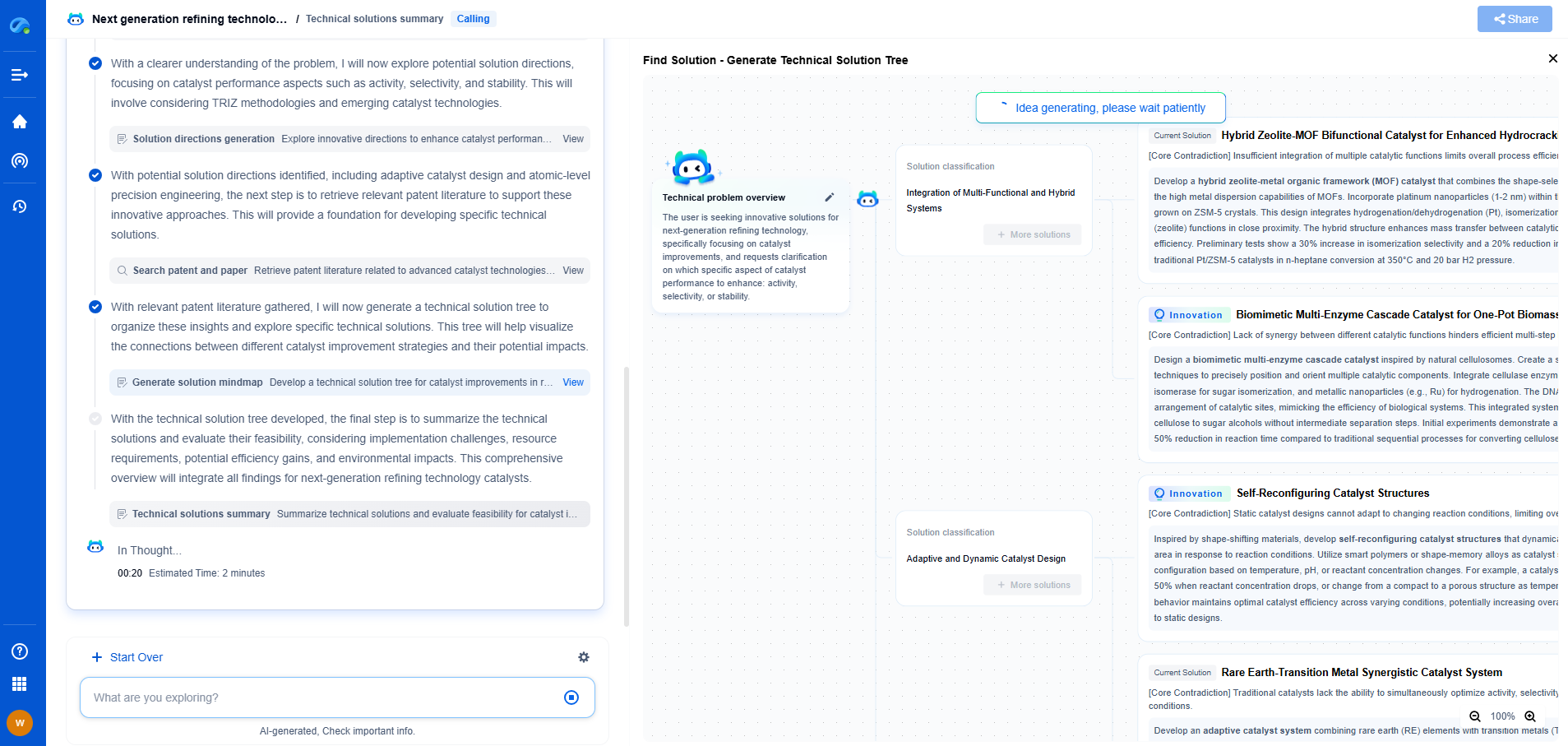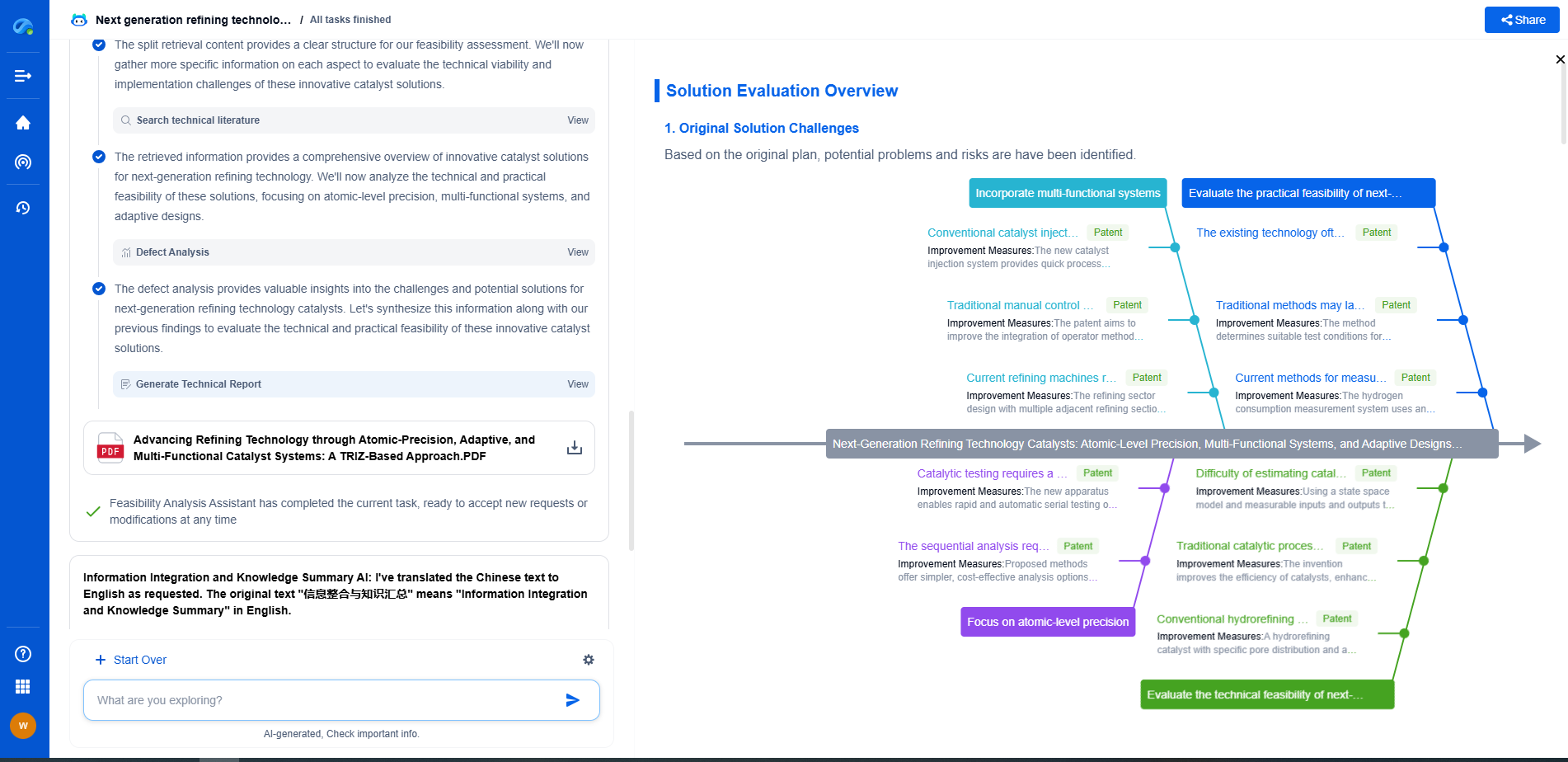3D-Printed Harmonic Drives: Lightweight & Customizable Designs
JUN 26, 2025 |
Harmonic drives have long been celebrated for their precision, compact size, and high torque capabilities, making them an essential component in robotics, aerospace, and various automation fields. Traditional manufacturing processes, however, often impose limitations on design complexity and customization. Thankfully, 3D printing technology has opened up new possibilities for engineers and designers, allowing for the creation of lightweight and highly customizable harmonic drives. In this article, we will explore the transformative potential of 3D-printed harmonic drives and the benefits they bring to the table.
The Advantages of 3D Printing Technology
3D printing, or additive manufacturing, allows for the construction of intricate and complex geometries that are often impossible with conventional manufacturing methods. This technology enables the production of parts in a layer-by-layer fashion, which is particularly advantageous for creating the flexible spline and wave generator of harmonic drives. By leveraging 3D printing, designers can experiment with innovative shapes and structures, optimizing performance and reducing the overall weight of the harmonic drives.
Customization: Tailoring to Specific Applications
One of the most significant advantages of 3D printing harmonic drives is the ability to customize designs to meet specific application requirements. Traditional manufacturing methods often require costly tooling and lengthy lead times for custom orders. In contrast, 3D printing enables rapid prototyping and production, allowing engineers to adjust dimensions, materials, and design features with relative ease. This flexibility is invaluable in industries like robotics, where precise movement and compact design are crucial. Customizable harmonic drives can enhance efficiency and performance, providing tailored solutions for unique challenges.
Lightweight Design without Compromising Strength
Weight reduction is a critical factor in many applications, especially in aerospace and robotics, where every gram counts. By utilizing advanced 3D printing materials such as high-strength polymers and metal composites, designers can create harmonic drives that are significantly lighter than their traditionally manufactured counterparts. Despite the reduction in weight, these components maintain the necessary strength and durability required for demanding applications. The ability to fine-tune material properties through additive manufacturing further enhances the performance and longevity of 3D-printed harmonic drives.
Sustainability and Cost-Effectiveness
3D printing not only facilitates innovative design but also contributes to sustainability and cost-effectiveness. Additive manufacturing reduces material waste by precisely depositing material only where needed, thereby minimizing excess. Additionally, the need for extensive machining and assembly is diminished, leading to lower production costs and reduced energy consumption. As industries increasingly prioritize sustainability, the environmental benefits of 3D-printed harmonic drives become an attractive proposition.
Challenges and Future Prospects
While the advantages of 3D-printed harmonic drives are clear, there are still challenges to overcome. Material limitations, surface finish quality, and process consistency remain areas for improvement. However, ongoing advancements in 3D printing technology continue to address these issues, promising even greater possibilities for enhancing harmonic drive designs.
Looking to the future, the integration of smart materials and advanced 3D printing techniques holds the potential to revolutionize harmonic drive applications further. As the technology matures, we can expect to see even more innovative designs and applications emerge, expanding the reach and capabilities of harmonic drives across various industries.
Conclusion
3D printing technology is reshaping the landscape of harmonic drive manufacturing, offering unprecedented opportunities for lightweight, customizable, and efficient designs. By embracing the advantages of additive manufacturing, industries can overcome traditional limitations and drive innovation in robotics, aerospace, and beyond. As this technology continues to evolve, the potential for 3D-printed harmonic drives will undoubtedly expand, paving the way for a new era of mechanical precision and performance.
Ready to Redefine Your Robotics R&D Workflow?
Whether you're designing next-generation robotic arms, optimizing manipulator kinematics, or mining patent data for innovation insights, Patsnap Eureka, our cutting-edge AI assistant, is built for R&D and IP professionals in high-tech industries, is built to accelerate every step of your journey.
No more getting buried in thousands of documents or wasting time on repetitive technical analysis. Our AI Agent helps R&D and IP teams in high-tech enterprises save hundreds of hours, reduce risk of oversight, and move from concept to prototype faster than ever before.
👉 Experience how AI can revolutionize your robotics innovation cycle. Explore Patsnap Eureka today and see the difference.
- R&D
- Intellectual Property
- Life Sciences
- Materials
- Tech Scout
- Unparalleled Data Quality
- Higher Quality Content
- 60% Fewer Hallucinations
Browse by: Latest US Patents, China's latest patents, Technical Efficacy Thesaurus, Application Domain, Technology Topic, Popular Technical Reports.
© 2025 PatSnap. All rights reserved.Legal|Privacy policy|Modern Slavery Act Transparency Statement|Sitemap|About US| Contact US: help@patsnap.com

